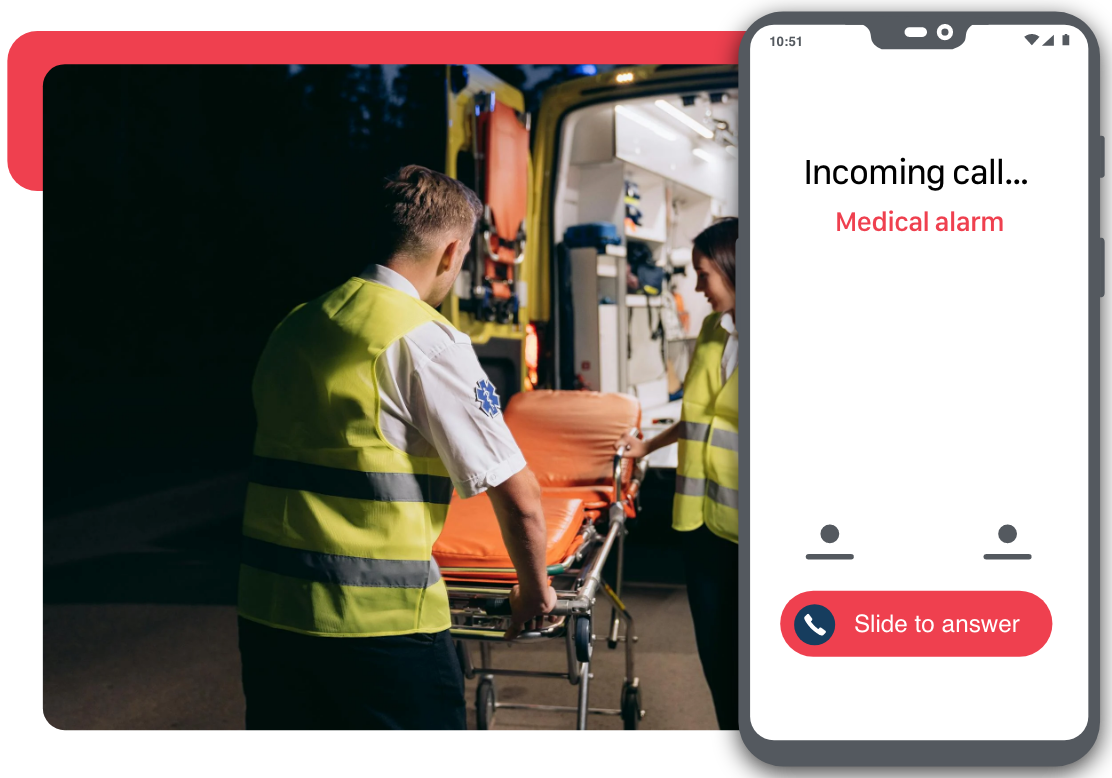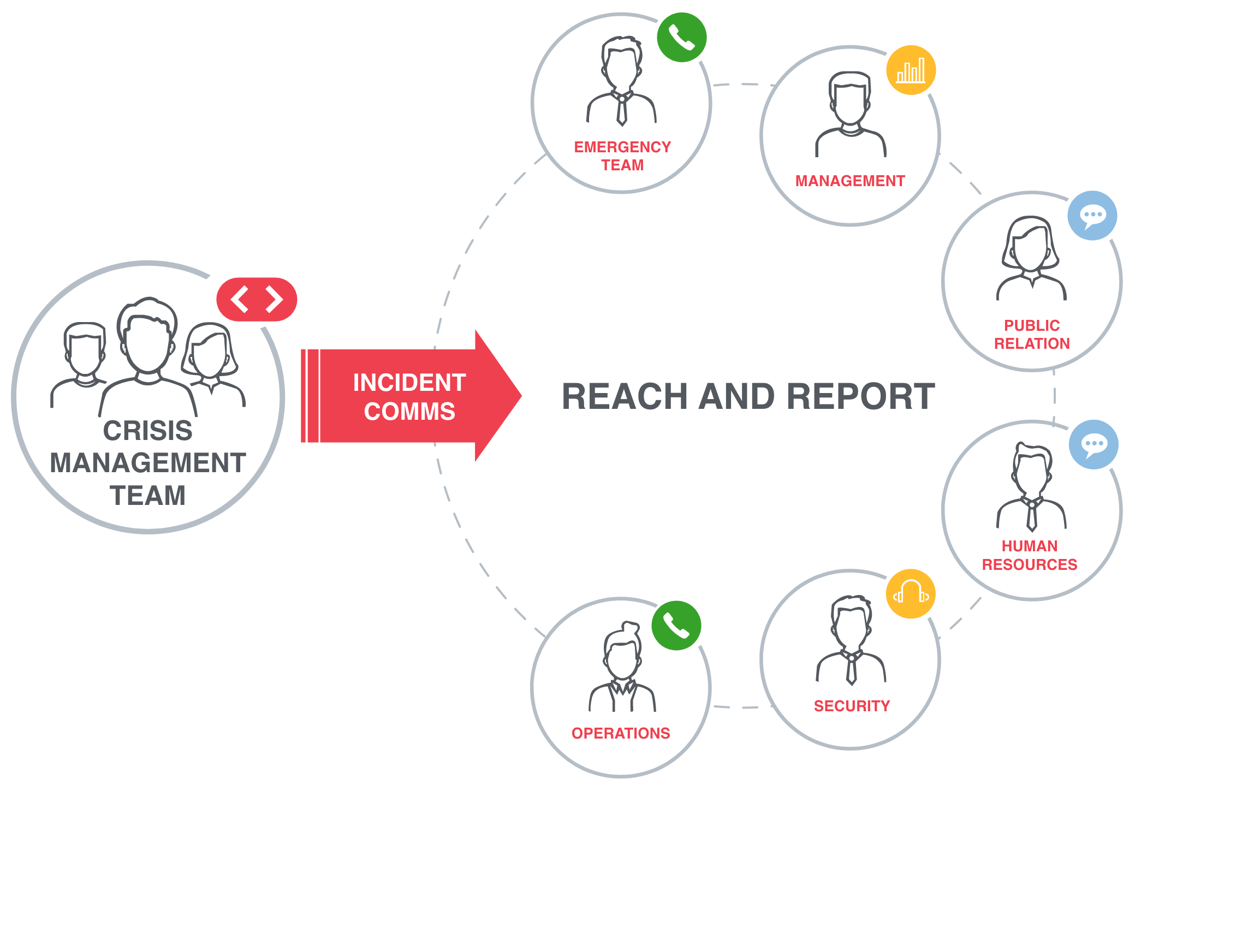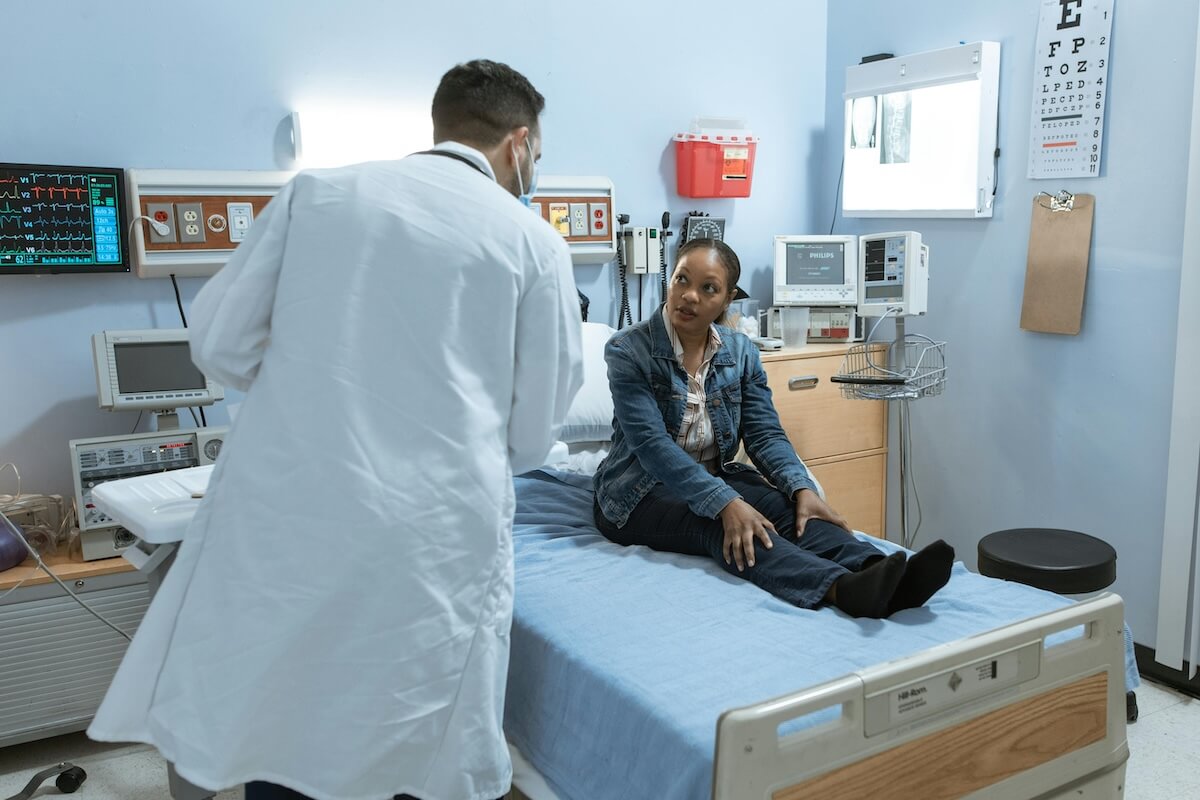
Emergency Use
- Quickly notify and mobilise the required staff and resources
- Swiftly convene a crisis team
- Provide precise instructions for the safe evacuation and relocation of patients
- Maintain internal and external communication to keep all parties, including staff, patients and the public informed
- Alternative communication in case of IT infrastructure failure
- Restore regular hospital operations as quickly as possible after an emergency and analyse emergency actions to improve future measures
Operational Use
- STEMI type scenario to mobilise cardiac personnel
- Management of Bed Capacity
- Significantly speeds up the communication process
- Alert key personnel and assistant teams as required
- Everyone receives the information they require
- Faster response time from staff and key personnel
- Staff can focus on other urgent tasks
- Scenarios can be created in advance to minimise human error

Areas of Application
Crises cannot be prevented, but we can help you overcome them. An emergency management system in hospitals is utilised to effectively respond to various types of emergencies, such as natural disasters, major incidents, pandemics, or security-related incidents. The system can also be used for operational purposes to minimise disruption. An em ergency management system typically includes the following components:

Preparation and Prevention
Training and drills for staff to efficiently react during an emergency, as well as measures to mitigate risks.

Alerting
Systems for rapid notification and mobilisation of the required personnel and resources in the event of an emergency.

Command
Provide a crisis management team with the ability to mobilise and coordinate actions during an emergency.

Communication
Internal and external communication to keep all stakeholders, including staff, patients, and the public, informed.

Resource Management
Planning and provisioning of necessary resources such as personnel, equipment, and medications.

Medical Care
Adapting medical care to the increased number of patients or special requirements during times of need.

Recovery and Debriefing
Measures to restore regular hospital operations following an emergency and evaluations of the emergency response to improve future measures.

Monitoring of devices
The Smartphone devices are monitored to make sure all are operating.
Alerting
By focusing on alerting, hospitals can improve their ability to communicate critical information during emergencies timely and effectively, thus protecting the well-being of patients, staff, and visitors. Reach your staff through different channels and share reports with key roles.


Command
Facilitate the crisis management team that manages the coordination and direction of actions in an emergency. The emergency planning team, plays a crucial role in the emergency management of hospitals. It involves organising, coordinating, and directing all actions and resources necessary to manage an emergency. A well-organised emergency response team is the backbone of hospital emergency management, ensuring the institution can effectively respond to emergencies, protect the well-being of patients and staff, and enable a quick return to normal operations.
Communication
Internal and external communication plans to keep all parties, including staff, patients, and the public, informed.
Effective communication during an emergency is a cornerstone of hospital emergency management and serves as the basis for coordinating response measures, disseminating important information, and ensuring the safety of patients, staff, and visitors. By focusing on these aspects, hospitals can develop a robust communication strategy that not only facilitates an effective response during emergencies but also strengthens overall safety and trust among patients, staff, and the wider community.


Resource Management
Planning and provisioning of necessary resources such as personnel, equipment, and medications. Resource management in hospital emergency management involves strategic planning, allocation, and utilisation of available resources to effectively respond to emergencies and ensure continuity of care. It encompasses a wide range of measures and considerations aimed at ensuring personnel, equipment, and materials are available and efficiently used during a crisis. Effective resource management not only ensures adequate response to immediate crises but also contributes to the resilience and sustainability of healthcare services.
Medical Care
Medical care during emergencies in hospitals requires a well-coordinated approach to ensure all patients receive the necessary treatment quickly and efficiently despite challenging conditions. Notification systems can also be utilised for day-to-day operational purposes to effectively manage resources and avoid disruptions to service.

Preparation
Training and exercises for staff to test procedures in emergencies and risk mitigation measures. Through comprehensive preparation and prevention measures, hospitals can ensure they are as prepared as possible for emergencies, reduce the risk of incidents, and act quickly and effectively in case of emergency.
Evacuation
Ensure the safety of patients, staff, and visitors during emergencies that compromise the structural integrity or environment of the facility, such as fires, incidents involving hazardous materials, or threats of violence.
A well-coordinated evacuation plan ensure the safety of everyone in the hospital.
Recovery
Recovery and debriefing are critical concluding phases in the emergency management cycle within hospitals. These stages focus on returning to normal operations and learning from the incident to improve future responses. Hospitals can not only return to normal operations more efficiently but also enhance their resilience and preparedness for future emergencies.


